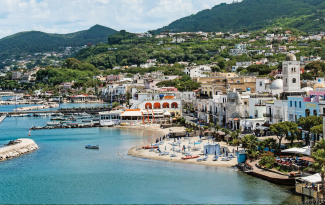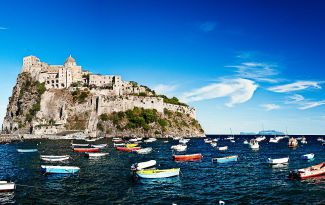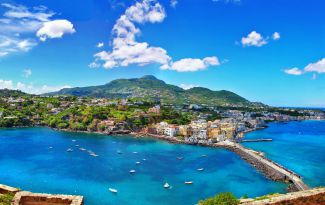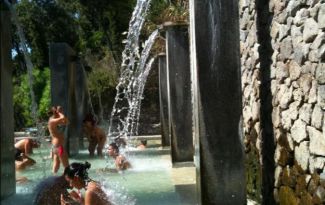The volcanic islands
Ischia is the largest island in the Gulf of Naples and belongs to a group of islands known as the Flegrean Islands. This group includes, besides Ischia, also Procida and Vivara Nesida.
Ischia is situated less than 30 kilometers from Naples and has a coastline of approximately 34 kilometers. With around 60,000 inhabitants, the island is the third most densely populated island in Italy, after Sicily and Sardinia.
The climate of Ischia is typically Mediterranean and is characterized by the island's landscape, which also includes Mount Epomeo (787 meters). In winter, the lowest temperature is about 9 ºC in January, but in summer, the temperature reaches a high of 30 ºC in August.
Ischia has a volcanic origin, like the other Flegrean Islands;It has been formed thanks to the several eruptions that occurred in the distant past. The highest peak of the island, Mount Epomeo, has a volcanic origin too, but contrary to what was claimed in the 20th century, this mountain is not a volcano but a formation of volcanic rock that accumulated 30,000 years ago.
In more recent times, the island has been affected also by eruptions and earthquakes. In the 13th century, the town of Arso was destroyed by a series of lava flows. Today, the volcanic activity is still evident through the many hot springs on the island.
The hot springs of Negombo and the bay of Sogerto are highly recommended.
The hot springs of Negombo and the bay of Sogerto are highly recommended.
Accommodations in this area:

Tenuta C'est la Vie - Ischia

Hotel Parco Smeraldo Terme&Residence - Ischia

Villa Ravino - Ischia

Il Moresco - Ischia

Hotel Terme Providence - Ischia

Casa Lora - Ischia

Pera di Basso - Ischia

Le Pleiadi - Succhivo, Ischia

Sant'Angelo - Ischia

Villa Lieta - Ischia

Hotel Myage - Casamicciola Terme, Ischia








